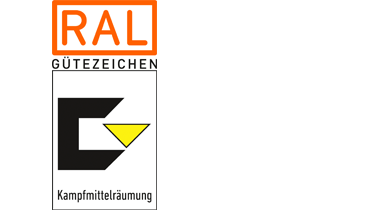A surface survey is an IT data recording made of the terrain surface and is deployed to investigate large areas (in excess of 5000 m²). For this purpose a multi-channel system (5 or 12 channels) performs a high-density scan of the entire surface area with sensors. The data is stored in the system and, once all the data has been collected, it is evaluated using specialised analysis software (generally Sensys Magneto, or similar). The results of this analysis allow determination of the following information on ferromagnetic anomalies:
- quantity
- precise location according to coordinates
- approximate depth according to model calculations
- model size (volume) and
- magnetic moment
These results enable operatives to determine the correct course of action required for the clearance (uncover, identify, recover) of ferromagnetic anomalies.
Further courses of action may include single point clearance, conventional site clearance or even separation. The key factor for determining the correct course of action is the evaluated density of contamination (evaluated quantity of ferromagnetic anomalies per m²).
Depending on the geological ground conditions, the surveying depth can extend as much as approx. 3 m below the surface according to the size of the object
A surface survey does not amount to actual clearance. Surface surveys are performed with a sensor spacing (separation) of no more than 0.25 m – 0.5 m between the individual survey lines.




